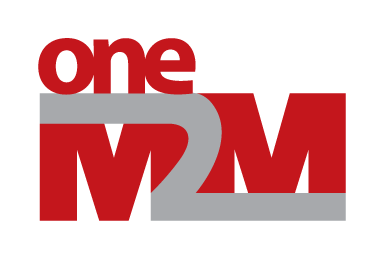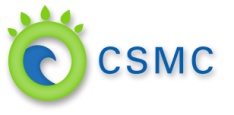3 FROM THE INTEGRATED FRAMEWORK TO THE ENHANCED INTEGRATED
(ENTER SCHOOL DISTRICT NAME) INTEGRATED PEST MANAGEMENT SERVICE AGREEMENT1232008 INTEGRATED COMMUNITY SERVICE PARTNERSHIPS SITE APPLICATION DESCRIPTION
13 THE INTEGRATED POVERTY REDUCTION STRATEGY FOR THE WESTERN
2.3%20Integrated%20Pest%20Management%20and%20Forest%20Health%208-5-05
25 INTEGRATED NUTRIENT MANAGEMENT FOR MORE SUSTAINABLE CASSAVA PRODUCTION
3 FROM THE INTEGRATED FRAMEWORK TO THE ENHANCED INTEGRATED
Please find attached the first newsletter of the Integrated Framework (IF), a multi-donor, multi-agency initiative to enable L
from the integrated framework to the
enhanced integrated framework
The Integrated Framework (IF) is a process that was established to support LDC governments in trade capacity building and integrating trade issues into overall national development strategies. The multilateral agencies participating in the IF (IMF, ITC, UNCTAD, UNDP, the World Bank and WTO) combine their efforts with those of LDCs and their other development partners to respond to the trade development needs of LDCs so that they can become full and active players and beneficiaries of the multilateral trading system.
The IF – which was later revamped and is currently in the process of being enhanced – was launched in October 1997 at the High-Level Meeting on LDCs Trade Development. The main objective of the early IF was to improve the capacity of LDCs to formulate, negotiate and implement trade policy so as to be able to fully integrate into the multilateral trading system and to take up the market opportunities it presents.
The achievements of the IF during the early years were modest, with only a handful of LDCs accessing benefits from the process. When the six Agencies met in 2000 to review progress they adopted a number of recommendations and implemented institutional changes to improve the IF's effectiveness. Two main objectives were formulated for the revamped IF: first, to mainstream trade into the LDCs' national development plans or strategies (PRSPs for most LDCs); and second, to assist in the coordinated delivery of trade-related assistance.
A new governance and management structure was established to enable the IF to be more country-driven and better coordinated. The revamped governance structure had an IF Steering Committee overseeing the IF, providing policy direction and assessing progress; and an IF Working Group managing the IF, monitoring implementation and overseeing the Trust Fund. In addition, a small IF Secretariat was staffed and housed by the WTO. The Secretariat has recently been reinforced through the addition of the IF Programme Implementation Unit, which includes three staff members exclusively working on the IF. The IF Trust Fund was funded on a multi-donor basis and is managed by UNDP. From the Trust Fund, resources are provided for two sets of activities, namely Window 1 (Diagnostic Trade Integration Studies (DTIS) and strengthening in-country structures) and Window 2 (some small capacity-building projects as identified in the DTIS Action Matrices).
This revamped IF enabled LDCs to work with the six Agencies and other development partners to ensure that national trade policies are integrated into their respective development strategies. The IF facilitates a coordinated response by the various agencies and development partners to the trade-related assistance and capacity-building needs identified by each of the LDC governments and other national stakeholders.
To date, the IF process consists of four phases, namely: (1) awareness-building on the importance of trade for development; (2) preparation of a DTIS to identify constraints to traders, sectors of greatest export potential and an action matrix for better integration into the global trading system; (3) integration of the action matrix into the national development strategy; and (4) implementation of the action matrix in partnership with the development cooperation community.
To date, 37 LDCs (of a total of 50) have become beneficiaries under the IF; this figure includes recent additions, such as the Solomon Islands and Guinea-Bissau, where the process has only just started. Of the 37 beneficiaries, 27 have completed the diagnostic stage and are now implementing the action matrix. An additional seven LDCs are in the preparatory phase to accession to the IF process. The DTISs and a small contribution towards implementation of priority actions (up to US$ 1 million per country) are being financed by an IF Trust Fund. Total contributions to the Trust Fund amount to US$ 50 million and total allocations from the Fund to US$ 27 million, of which about 47 per cent has been earmarked towards diagnostic activities and 53 per cent for implementing priority actions.
An evaluation of the IF in 2003/4 recommended the enhancement of the IF. Following the recommendations by the Development Committee of the World Bank and IMF at their meeting in 2005, the IF Steering Committee set up a Task Force to provide recommendations to enhance the IF. At the WTO Hong Kong Ministerial Conference in December 2005, Ministers reaffirmed their commitment to better integrate LDCs into the multilateral trading system and endorsed the three elements that would constitute the enhanced IF (EIF): (i) provide increased, predictable and additional funding on a multi-year basis; (ii) strengthen the IF in‑country, including through mainstreaming trade into national development plans and poverty reduction strategies; more effective follow-up to diagnostic trade integration studies (DTIS) and implementation of action matrices; and achieving greater and more effective coordination amongst donors and IF stakeholders, including beneficiaries; and (iii) improve the IF decision-making and management structure to ensure an effective and timely delivery of the increased financial resources and programmes.
The Task Force completed its work in mid-2006 and presented a number of recommendations to address the three aspects of IF enhancement. The IF Steering Committee endorsed the recommendations in July 2006 and set up a Transition Team to work out the details to implement the recommendations. The Transition Team under the (co‑) chairmanship of Ambassador Don Stephenson has since put forward guidelines to implement two aspects of the enhancement. The most important improvements are expected to take place in the beneficiary countries where the IF structures will be strengthened through a more effective partnership between national stakeholders, donors and IF agencies and through the establishment of national implementation arrangements, which will support the Focal Point.
The second aspect of the enhancement is an improvement of the IF global governance structure that is being put in place in Geneva. An IF Board, which assumed the mandate of the former IF Working Group, initiated its work, on an interim basis, in May 2007. A new IF Secretariat will be established, administratively housed in the WTO and headed by an Executive Director (ED), for whom the search has begun in August 2007. The ED and Secretariat staff will support governments in managing the IF process, as well as provide assistance to national focal points and national implementation arrangements. Work is currently being carried out to finalize construction of an accountability framework for the EIF Trust Fund Manager (TFM). The framework is expected to be laid out by the time the Stockholm Conference starts, and the selection of the TFM is scheduled to take place right after the Conference.
The Stockholm Conference has been called to address the third aspect of the IF enhancement, namely the provision of increased, predictable and additional funding on a multi-year basis. Once resources will have been pledged, it is expected that the EIF Board (the decision‑making body for the EIF) will launch the EIF later in 2007. The Executive Director for the EIF Secretariat is expected to be on board by early 2008. Funding of the EIF is channelled through two sources: the multilateral EIF Trust Fund and bilateral/regional donors. In addition to funding the multilateral EIF Trust Fund, which is aimed at providing bridging funding to jump-start project-related activities, more resources will also be needed to respond to the larger demands specified by the beneficiary countries in their diagnostics. These resources will be channelled through the traditional bilateral and regional sources from LDCs' development partners, though focused on the EIF action matrix.
The recommendations of the IF Task Force reflect the main differences between the IF and the EIF: stronger ownership of the EIF process by the LDCs and increased commitments from donors who will be key in the EIF partnership both locally, in their capitals and in Geneva. In the countries, the EIF focal point will be supported in its work by national EIF implementation arrangements. These implementation arrangements will focus on mainstreaming trade into national development plans and poverty reduction strategies; more effective follow-up to DTISs and implementation of action matrices; and achieving greater and more effective coordination amongst donors and national EIF stakeholders. Another aspect of IF enhancement at the country level will be greater efforts from the donors to harmonize their trade-related programmes with the EIF and to give greater recognition to the importance of trade and secure funds for the implementation of the action matrix in a sustainable manner. All this is expected to result in greater trade management capacity in the countries and to a more prominent role of trade in national development strategies.
The second set of changes will come from the establishment of a fully-fledged EIF Secretariat, administratively housed in the WTO and headed by an Executive Director. The Secretariat, of which a kernel already exists in the form of the IF Programme Implementation Unit at the WTO, is developing strong and close working relationships with the focal points and donor facilitators in the IF countries and is communicating best practices through an array of virtual and face-to-face outreach activities. As the Secretariat will reach its full size, capacity will be added for strengthened and continuous monitoring and evaluation to ensure that the EIF achieves its objectives and to develop strategies to closer involve the private sector in the EIF process.
The third difference between the current and the Enhanced IF will be the provision of sufficient funding through a multilateral trust fund and bilateral/regional cooperation. There has to be sufficient funding available in the multilateral trust fund to meet the costs associated with domestic capacity building (Tier I) and some but not all activities identified in the Action Matrices (Tier II). The Trust Fund also finances the Executive Secretariat.
34985 PROCUREMENT PLAN FOR THE INTEGRATED MANAGEMENT OF CRITICAL
40 INTEGRATED SMALLENTERPRISEDEVELOPMENT STRATEGY INTEGRATED SMALLENTERPRISEDEVELOPMENT STRATEGY UNLOCKING THE
402d-Resource-Integrated-Pest-Management-Plan-sample-10-9-08
Tags: integrated framework, are integrated, integrated, framework, enhanced
- PEDAGÓGIA A CSALÁDI NEVELÉS TÍPUSAI ÉS AZOK HATÁSAI A
- LEY Y DECRETOS QUE RIGEN EL TRABAJO DE LAS
- RESPECT DISCUSSION QUESTIONS NAME HOUR RESPOND TO EACH QUESTION
- ABMACHUNGEN EINER RICHTERVERPFLICHTUNG ZWISCHEN EINEM FCIAUSSTELLUNGSRICHTER UND EINEM FCIAUSSTELLUNGSVERANSTALTER
- VERSION FINAL (16 3 16) COSTS ASSESSMENT RULES COMMITTEE
- EDUCATION HUMAN RESOURCES WHISTLEBLOWING POLICY FOR SCHOOL STAFF SEPTEMBER
- ENTE NAZIONALE PER L’AVIAZIONE CIVILE AUTORITÀ COMPETENTE DELLA REPUBBLICA
- RJEŠENJE O IZBORU MANDATNOG POVJERENSTVA OPĆINSKOG VIJEĆA OPĆINE MATULJI
- THE BARBURY RIDES ENTRY FORM NAME ………………………………………………………… ADDRESS ……………………………………………………
- 9º ENCUENTRO DE VIDAS CIENTÍFICAS EN EUREKA! ZIENTZIA MUSEOA
- TÜRKİYE TAŞ KÖMÜRÜ KURUMU GENEL MÜDÜRLÜĞÜ ALIMSATIMKİRALAMATESİS VE YAPIM
- INFO HTTPWWWQUITEGREATCOUKCLIENTSMONKSGLENSTALPHP BISCANTORAT – SOUND OF THE SPIRIT THE
- LUIS CERNUDA ARTE POÉTICA HAY MOMENTOS
- PROGRAM NIFSKONGRESSEN OSLO PLAZA 2019 VERSJON MEDIO AUGUST 2018
- ANEXO II MEDICOS FORENSES SOLICITUD DE INCLUSION EN
- CURSO 2017 – 2018 CEIP “LA OLIVARERA” HELLÍN
- CLAUSULA PARA EFECTOS PERSONALES DE YATES DEL INSTITUTO ADICIONAL
- CLASSE IV – MATERIALI DI LAVORO – STORIA IL
- NEW PROJECT IS IN GARLA MARE ROMANIA STARTED
- 5 U C H W A Ł A N
- NOMBRE NUM PROBLEMAS DE MATEMÁTICAS TEMAS 3
- ENDÜSTRİYEL HİDROLİK HİDROLİK – PNÖMATİK SİSTEMLER ADANA 2012 GİRİŞ
- THE FIRST INTERNET TELEVISION AROUND THE WORLD FOR CZECHS
- FORMULARI D’ALTA I MODIFICACIONS AL SERVEI ETRAC □ ALTA
- STATUTES REQUIRING CONSTITUTIONAL ALIGNMENT STATUTES REQUIRING CONSTITUTIONAL ALIGNMENT
- LIBRERÍA PRAGA WWWLIBRERIAPRAGACOM 958 520 101 CATÁLOGO DE
- BACKGROUND WHAT IS AN ADVERSE EVENT? AN ADVERSE
- EVALUATION OF POTENTIAL FORECAST ACCURACY PERFORMANCE MEASURES FOR THE
- LICENCIATURA EN GESTIÓN ORGANIZACIONAL Y RECURSOS HUMANOS CREADA
- REPÚBLICA DE COLOMBIA UNIDAD ADMINISTRATIVA ESPECIAL DE AERONÁUTICA CIVIL
5 24909 MINUTES ACOC ACOC IS REQUESTING EMERGENCY FUNDING
17 BARIŞÇI TARİH ÖĞRETİMİ ÜZERİNE ÇALIŞMALAR TÜRKIYEDEKI TARIH
WICHTIGSTE EREIGNISSE HAUS KAPPELENRING 24 1ECKPUNKTE JAHR ERNEUERUNGEN
CIENCIAS PARA EL MUNDO CONTEMPORÁNEO 1º BACHILLERATO CIENCIAS SOCIALES
PROCES VERBAL AL ŞEDINŢEI ORDINARE A CONSILIULUI LOCAL
 CHANGE REQUEST MEETING ID TDE442 SOURCE POORNIMA SHANDILYA CDOT
CHANGE REQUEST MEETING ID TDE442 SOURCE POORNIMA SHANDILYA CDOT ENILOV PREDLOG RESOLUCIJE EVROPSKEGA PARLAMENTA O VPLIVU ZMANJŠANJA JAVNE
ENILOV PREDLOG RESOLUCIJE EVROPSKEGA PARLAMENTA O VPLIVU ZMANJŠANJA JAVNE ESTOS SENCILLOS PASOS ME CUESTAN 0 ME AHORRAN MUCHOS
ESTOS SENCILLOS PASOS ME CUESTAN 0 ME AHORRAN MUCHOSCARMEN MARTINEZ BORDIU LOS ESCÁNDALOS COMO OFICIO SUELEN SER
 INSCRIPCION CONCURSO TALENTOS PROMETEO 2020 (TODO LOS MIEMBROS DE
INSCRIPCION CONCURSO TALENTOS PROMETEO 2020 (TODO LOS MIEMBROS DEPRILOG 1 PODNOSITELJ ZAHTJEVA OIB ADRESA
STANDING ORDER FOR THE POSSESSION DISTRIBUTION AND ADMINISTRATION OF
 POVJERENSTVO ZA PRIZNANJA KLASA 02104110142 URBROJ 21400101112
POVJERENSTVO ZA PRIZNANJA KLASA 02104110142 URBROJ 21400101112 DECRETO FORAL 292005 DE 21 DE FEBRERO POR EL
DECRETO FORAL 292005 DE 21 DE FEBRERO POR EL02AMPLOS PODERES SIMPLES A QUEM CONFERE(M) AMPLOS GERAIS E
 W316RHOW TO SETUP THIS ROUTER? PRODUCT LINE WIRELESS QUESTION
W316RHOW TO SETUP THIS ROUTER? PRODUCT LINE WIRELESS QUESTIONNAME 40 IONIC REACTIONS LAB THE
 SUPERVISÃO DE ESTÁGIO CURRICULAR IV CURSO DE FARMÁCIA TERMO
SUPERVISÃO DE ESTÁGIO CURRICULAR IV CURSO DE FARMÁCIA TERMOTHE WEST WING – “SLOW NEWS DAY” AP US
BENJAMIN LEE WHORF «UN MODELO INDIOAMERICANO DEL UNIVERSO» EN